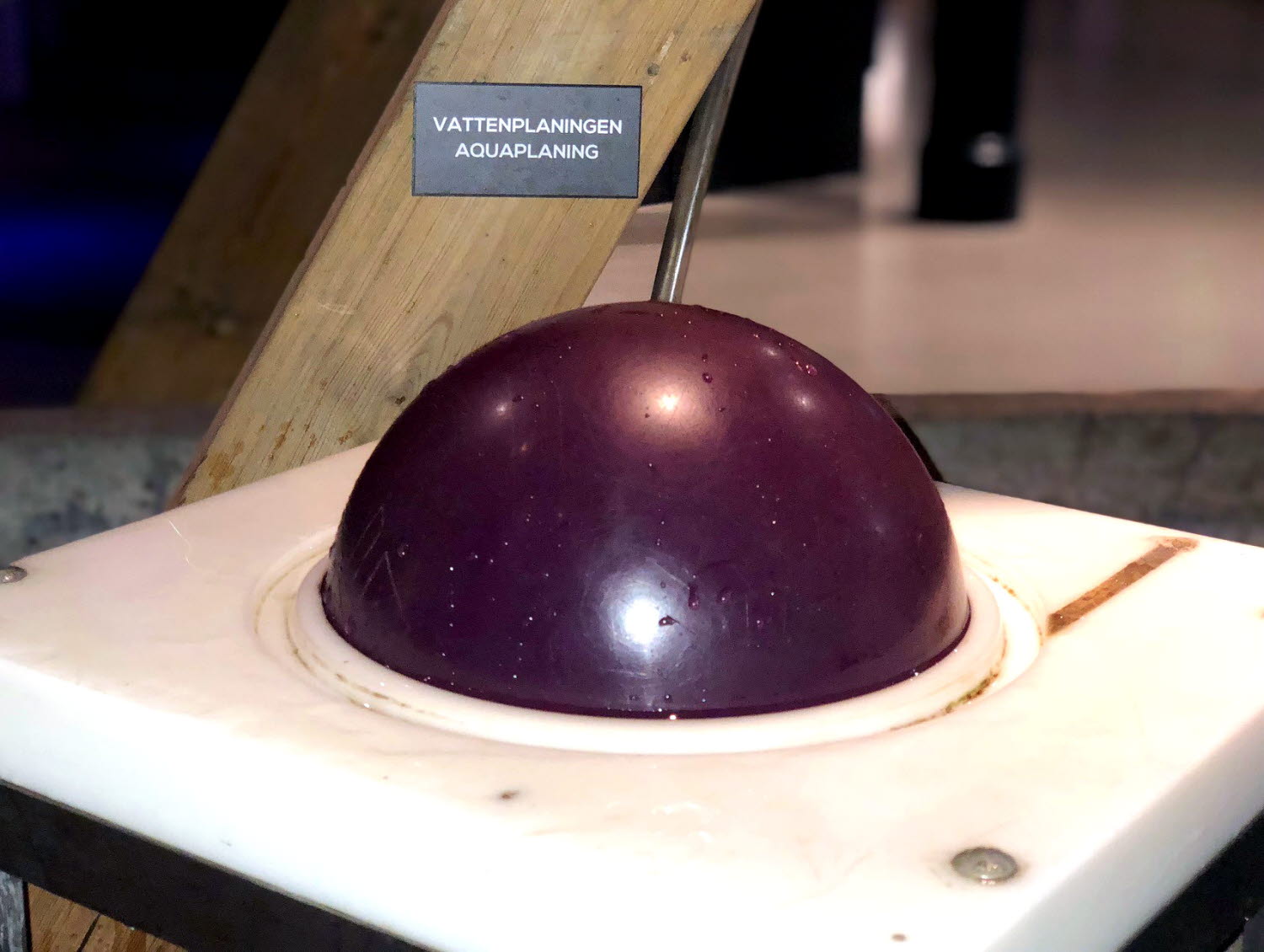
Aquaplaning
This experiment shows a risk that is associated with reality – on a wet road.
In the spherical/concave dish below the bowling ball, water is introduced like a film between the ball and the dish. The film of water reduces friction between the two surfaces, the ball and the dish. The ball weighs 7 kg.
Where can you find this on a daily basis?
When driving a vehicle, such as a car, at high speed on a wet road, a wedge of water can form between the tire and the surface of the road. The tire then loses its contact with the road and the car can no longer react when the driver tries to steer. This phenomenon is called aquaplaning and may result in major traffic risks.
Low surface pressure against roads causes a greater risk of aquaplaning compared to a high pressure. Therefore, the tendency of a vehicle to aquaplane is reduced if the load is increased.
Aquaplaning tends to happen at low speeds, caused by tyres with smaller treads than larger ones. The pattern of the tyre tread is also very significant. Some tyres are designed so water is mainly drained out to the sides, whereas others drain the water towards the back. Worn-down tyres provide no drainage at all, which is why aquaplaning happens at lower speeds than with tyres that still have their treads.









